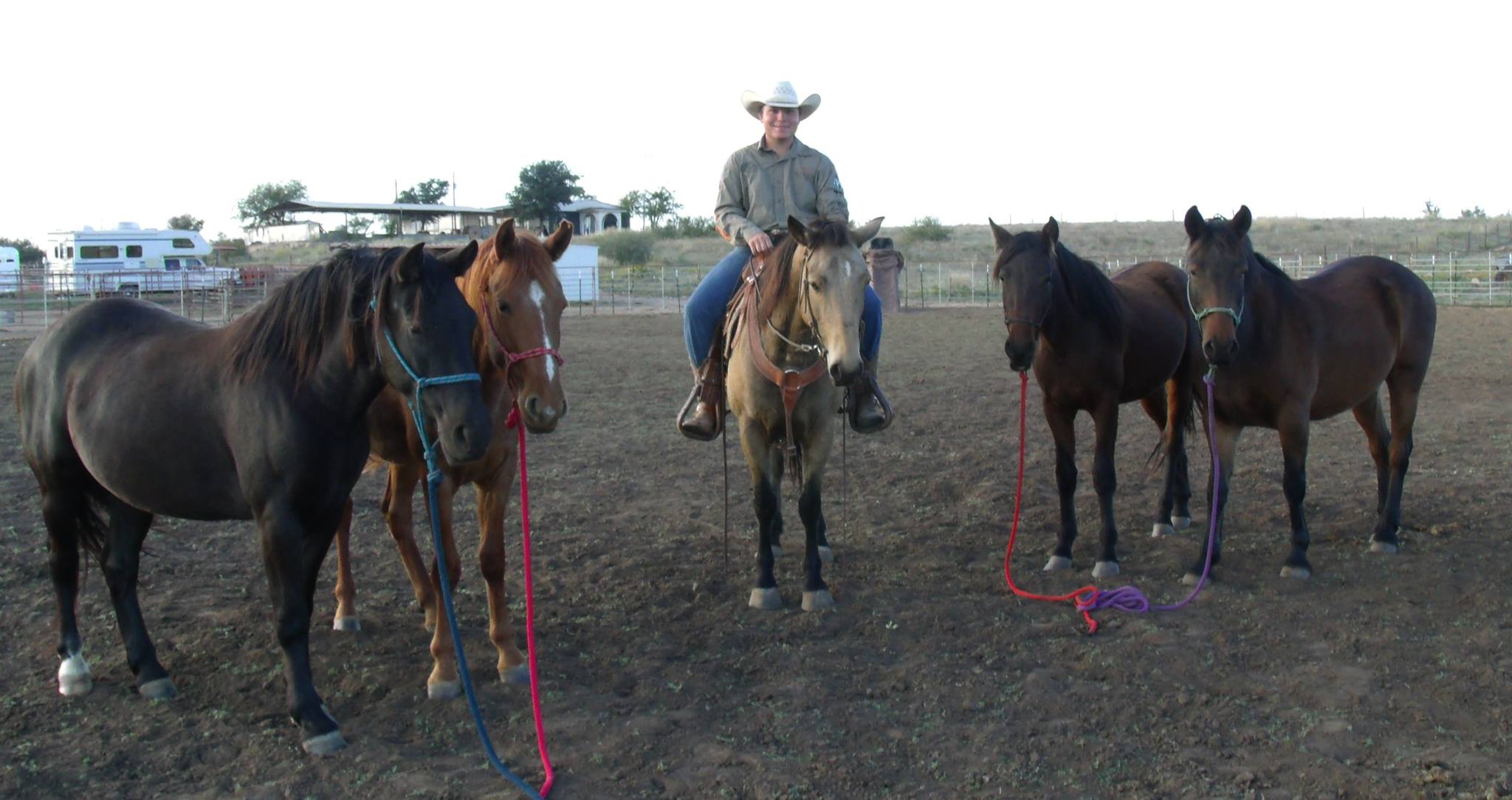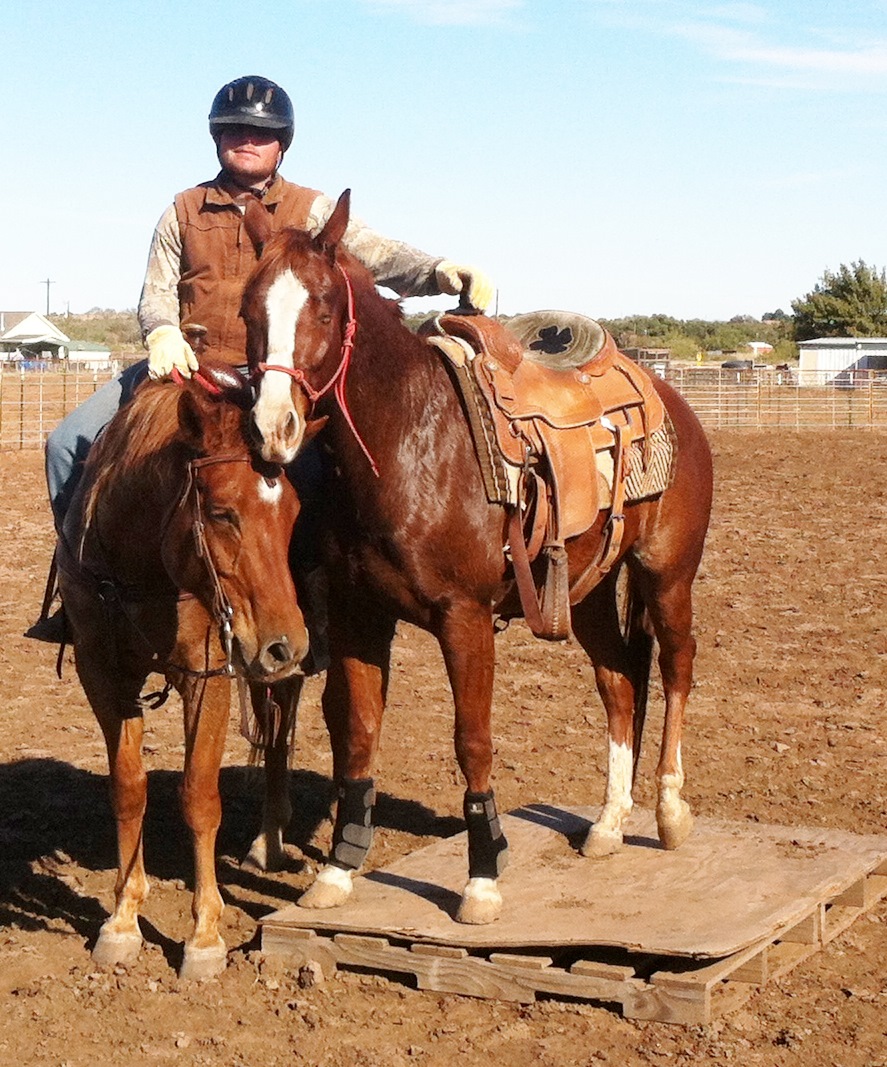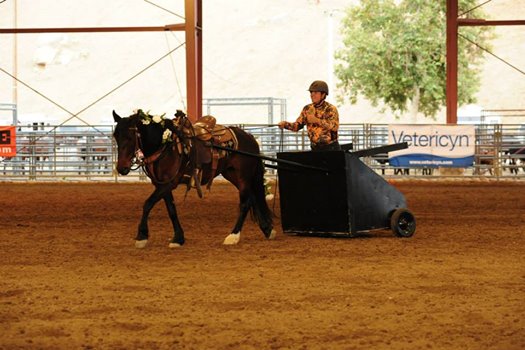HOME
The Natural Horseman – Don’t judge a book by its cover.
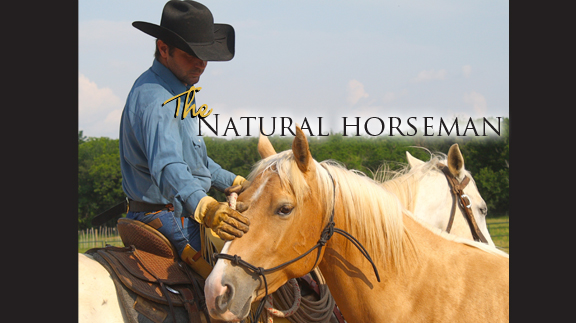
By Steve Stevens
Through adversity here comes the youth of horsemanship.
At three colt starting competitions, I have had the privilege to watch and compete with a young man by the name of Tyler Brewster.
Tyler Brewster. (Photo courtesy of Steve Stevens)
In Gainesville, Texas, Tyler showed up with a bright smile and a quiet disposition. Probably many would have considered him an underdog due to his youth at the age of twenty-one and the fact that there were at least three other competitors with multiple wins and years of experience under their belts. Tyler quietly won the competition showing a confident young horse like it had been ridden for months after only three and a half hours of handling. I was one of the doubters in the young man at first. I thought he just got lucky and that it would be tougher on him at the next competition.
I ran into him again about a month later. This time I made a conscious note to keep a closer eye on him. What I saw was a man who was determined to help the horse. He took his time, always seeming to be a step behind the rest of the group. With that being said, by the time we got into the obstacle finals round, he once again showed a quiet horse like he had been ridden for months. And once again Tyler won first in the competition with yours truly placing second.
I am sure the naysayers would say he drew two easy colts in a row, but I saw more than that. It was the way these colts carried themselves. They connected with him and moved for him with grace.
But once again I said to myself, “Maybe a fluke. We will see how he does at the last competition of the year.” We just competed at Abilene, Texas, this last weekend and Tyler did what he had done twice before, delivering a quiet well-moving colt, trotting over rails, dragging logs and cantering all around the giant Abilene arena. Tyler did not win the competition this time and ended up only two points shy of making the finals in Vegas.
But what I saw was more impressive than any buckles and finals qualifications, which was an unassuming man with a gentle and slow approach to horses, delivering one horse after another to owners with a great beginning foundation and most importantly, Tyler gives horses confidence in the human being and to me you can’t value that in gold buckles.
I have gotten to know Tyler over the last three competitions and have recently learned that there is more to his story.
Ever since Tyler was a little boy he wanted to be a horse trainer watching guys like Clinton Anderson and Chris Cox on TV. Tyler grew up in Van Horn, Texas. His mom rode while she was pregnant with him and got him in the saddle with her as soon as she could. His mom said he cried more than any baby she had ever seen but never cried when he was on a horse.
His family had a lease where they had a small cow/calf operation, where they grew hay in the summer and grazed 200 steers on wheat fields through the winter. 95 percent of the cattle work they did was on 4-wheelers and Tyler always wanted to use horses instead.
In April of 2006, Tyler was 13 years old.
In his own words, “We were gathering steers to ship them. I was on my Appaloosa barrel horse my parents bought me to do playdays on and we had the steers about half a mile from the pens. I turned my horse to push a steer that was moving slow and my horse spun around in the other direction and ran off. I tried to one rein stop him to the left but I couldn’t get him shut down. He was dead running towards a six wire fence.
“Mom and dad were on 4 wheelers and got in front of him and he still wouldn’t slow down or stop so Dad rode up beside me and grabbed my right rein and it pulled him off the 4-wheeler, and my horse fell down and slid. I shattered my right elbow into 20 pieces and killed skin and blood vessels in my right leg from upper thigh to below the knee. The impact even cracked my helmet.
“After many surgeries and many months of therapy on my arm, it is still froze up. I have skin grafts on my leg and I only have one layer of skin over my knee. After my wreck I swore I would never ride again…that lasted about a week. Then I was counting down the days to get back in the saddle.”
Tyler says that his wreck humbled him and made him a much better person; it helped to shape his horsemanship skills and to always put safety first.
Years later, Tyler has to navigate around his injuries when training, but I think it has helped him figure out how to connect with the horses on a deeper level.
What some people might consider an obstacle has truly become a blessing for the horse.
In 2008, Tyler’s father passed away from cancer after a two year battle. Tyler and his mother then moved to San Angelo to heal.
Tyler has competed in multiple competitions and has shown mustangs at the Extreme Mustang Makeovers, making the finals in all seven events he has entered. His best placings were third at Norco, Calif., in 2013, third at Mustang Magic Invitational at Ft. Worth in 2014 and Champion at Norco, Calif., in 2015.
Even more impressive than Tyler’s success is the true young gentleman that he is. Even after winning an event, he is the first person to help grab other contestants’ equipment and load it in their cars. It has been an honor to get to know Tyler and I would be truly blessed to have my own son grow up to become the man he is.
If this is any sign for the future of horsemanship, horses will have a bright future with their relationship with the human. I am proud to call Tyler my friend.
You can follow Tyler on Facebook as he continues to do competitions and trains horses for the public.
HOME
Farm and Ranch Injuries
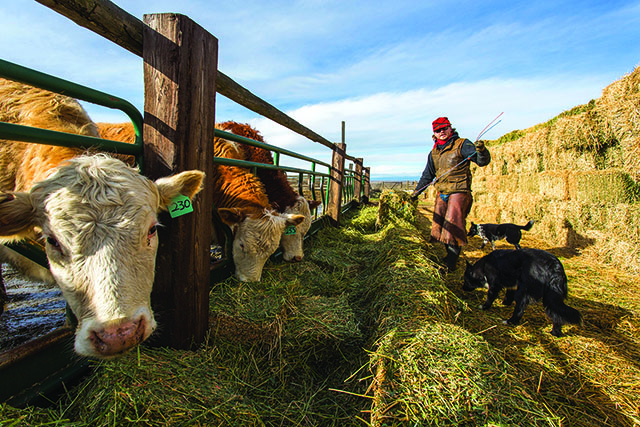
By Barry Whitworth, DVM
In January, I attended the Oklahoma Veterinary Conference. While waiting for one of the sessions to start, a classmate of mine commented how many of the attendees walk with a limp, used a cane, and/or have damaged hands. We all agreed that working with animals is hard on the body. In general, anything associated with farming and ranching is dangerous.
Most farmers and ranchers know that agriculture is a dangerous occupation. According to United States Bureau of Statistics, workers involved in agriculture, forestry, and fishing had the highest occupational fatality rate in 2022. The fatality rate of 23.5 per 100,000 full-time equivalent (FTE) workers for this group is much higher when compared to the overall occupation fatality rate of 3.7 per 100,000 FTE. Most of the agriculture-related fatalities are associated with transportation, such as tractor overturns, and vehicle crashes, but a fair number involve livestock.
To read more, pick up a copy of the March issue of NTFR magazine. To subscribe by mail, call 940-872-5922.
HOME
Jesses Jewelz

By Jesse Kader
Comfy and keep it western. That’s the name of the game this month. It’s hot and who wants clingy clothing? This jumpsuit is perfectly comfortable and relaxed without forfeiting the fashion. Dress it up or keep it casual. See this and more at www.jessesjewelz.com.
HOME
Noble Research Institute Expands New Program Offering Farmers and Ranchers the Essentials of Regenerative Ranch Management
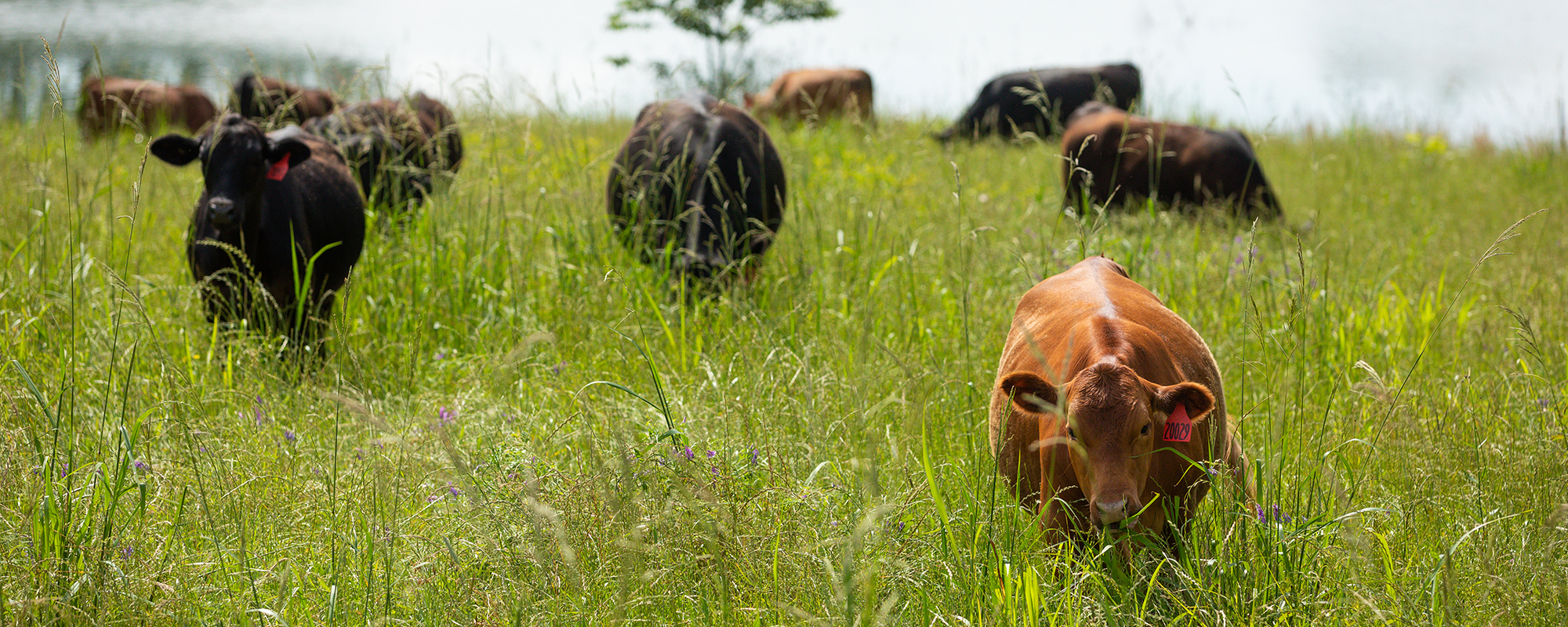
The educational program has been expanded to three new locations, empowering ranchers and farmers to monitor and improve the health of their land, livestock and livelihood through regenerative principles.
ARDMORE, OK–September 12, 2023 – Noble Research Institute announced the expansion of Essentials of Regenerative Ranching, a new educational program designed to help ranchers enhance and restore the land, making it more resilient and reaching livestock grazing goals through regenerative management. Essentials of Regenerative Ranching provides producers with practical tools, hands-on experience and guidance to make data-driven decisions to decrease costs and improve profit.
The Essentials of Regenerative Ranching course has been expanded to three new locations in Texas and Oklahoma. Registration is open now at www.noble.org/essentials. Seating is limited, so early registration is recommended.
Texas A&M
College Station, Texas
October 17 – 18
O.D. Butler, Jr. Animal Science Complex
Noble Research Institute
Ardmore, Oklahoma
October 31 – November 1
Pavilion Center
Texas A&M
Kingsville, Texas
November 7-8
Caesar Kleberg Wildlife Center
“Program participants gain working knowledge and experience of monitoring and improving the health of their soil, grazing livestock more strategically and making informed financial decisions,” said Hugh Aljoe, Noble Research Institute’s director of ranches, outreach and partnerships. “We use a mix of classroom and field work to send producers home with the tools they need to begin making changes on their ranch.”
Farmers and ranchers navigate uncertainty from weather, fluctuating market prices and escalating costs of inputs. Many producers are seeking new tools that offer greater control and reduce their operational uncertainty. Through this course, ranchers and farmers will calculate their financial situations, determine initial stocking rates, carrying capacity and grazing goals.
“The course is well-suited for ranchers of all experience levels and all types and sizes of operations,” Aljoe added. “No matter your situation, this program will transform the way you think about your ranch.”
The Essentials of Regenerative Ranching program allows producers to overcome obstacles, become more informed problem-solvers and increase the productivity of their grazing lands. By participating in this program, ranchers join a community of like-minded producers who are shaping the future of ranching and leaving a lasting impact on their land and families. “If I had known what I learned in this course when I started my regenerative journey, I could have avoided some key mistakes,” said Tana McCarter, a rancher, and Essentials attendee. “I left with the tools I needed to monitor my soil health and financial progress. I’ll now have the right data to make informed decisions on how to meet my regenerative goals.”
Noble Research Institute is an independent nonprofit agricultural research organization dedicated to guiding farmers and ranchers in applying regenerative principles that yield healthier soil, more productive grazing land, and business success.
At Noble, researchers, facilitators and ranch staff work together to share with farmers and ranchers the skills and tools to regenerate the land in a profitable manner. Noble is focused on the regenerative management of the nation’s grazing acres, which directly impacts pasture and range environments, wildlife, pecan production, and livestock production. Regenerative management recognizes that each decision made on the ranch impacts the interactions of the soil, plants, water, animals, economics and people. Noble’s 14,000 acres of working ranch lands provide a living laboratory on which to demonstrate and practice regenerative principles and ideas to deliver value to farmers and ranchers across the U.S.
-

 Country Lifestyles1 year ago
Country Lifestyles1 year agoScott & Stacey Schumacher: A Growth Mindset
-

 Equine7 months ago
Equine7 months agoThe Will to Win
-

 Country Lifestyles7 years ago
Country Lifestyles7 years agoStyle Your Profile – What your style cowboy hat says about you and new trends in 2017
-

 Country Lifestyles4 years ago
Country Lifestyles4 years agoAmber Crawford, Breakaway Roper
-

 HOME7 years ago
HOME7 years agoGrazing North Texas – Wilman Lovegrass
-

 Country Lifestyles7 years ago
Country Lifestyles7 years agoDecember 2016 Profile, Rusty Riddle – The Riddle Way
-

 Country Lifestyles8 years ago
Country Lifestyles8 years agoJune 2016 Profile – The man behind the mic: Bob Tallman
-

 Outdoor9 years ago
Outdoor9 years agoButtercup or Primrose?

